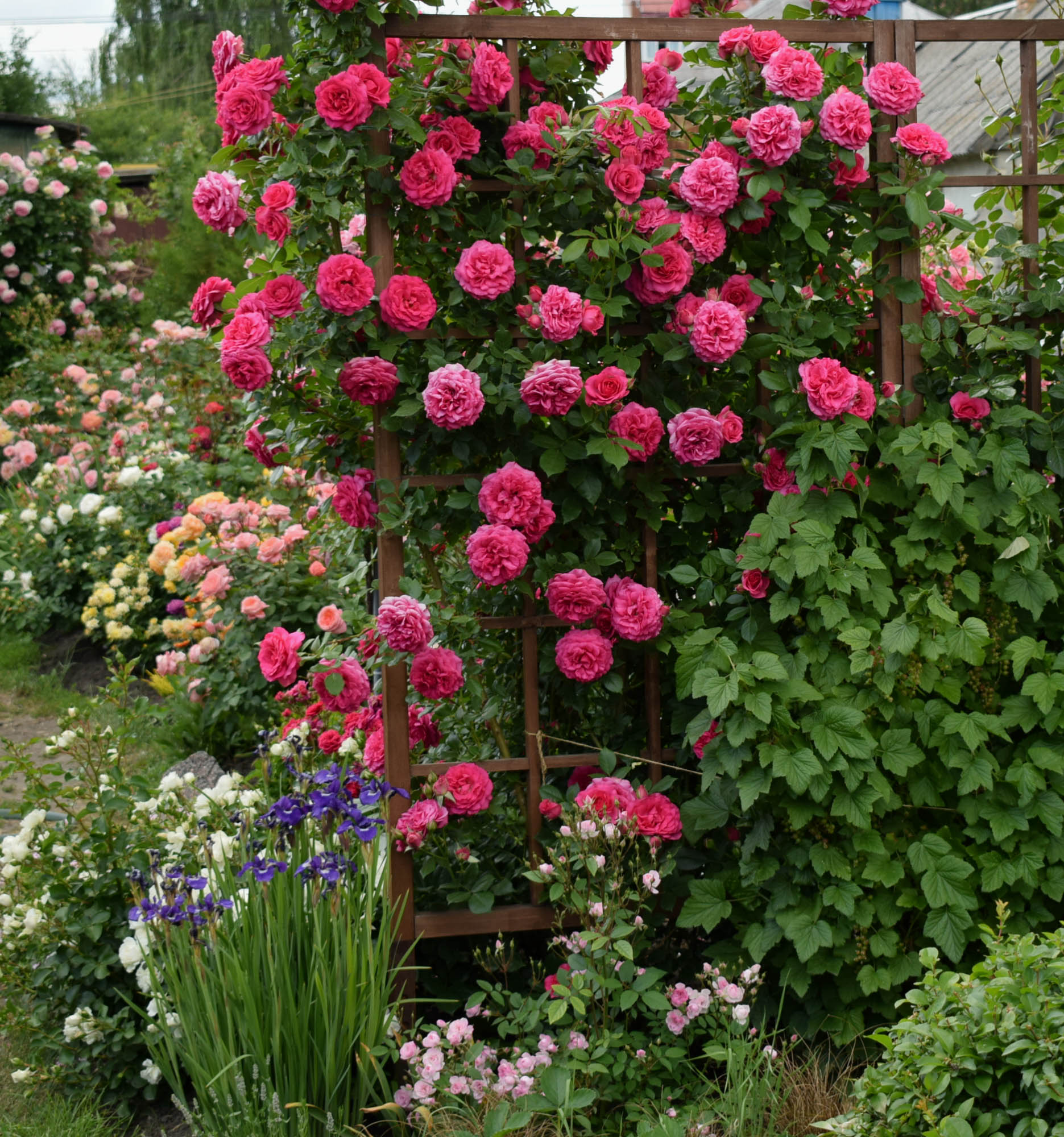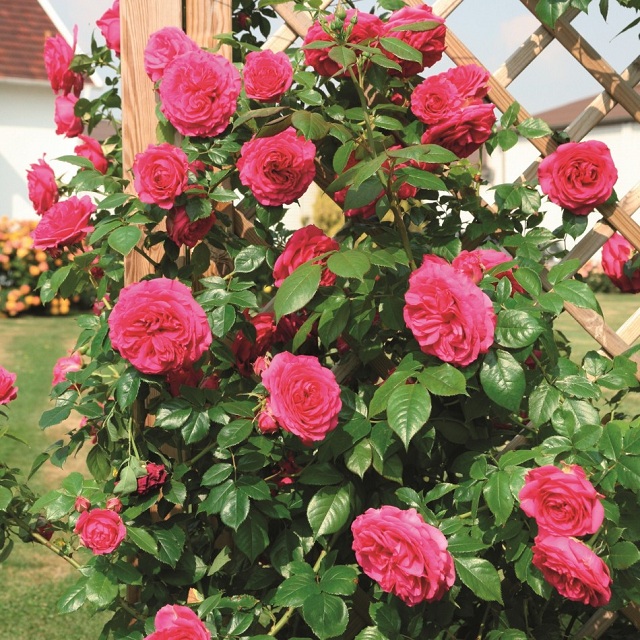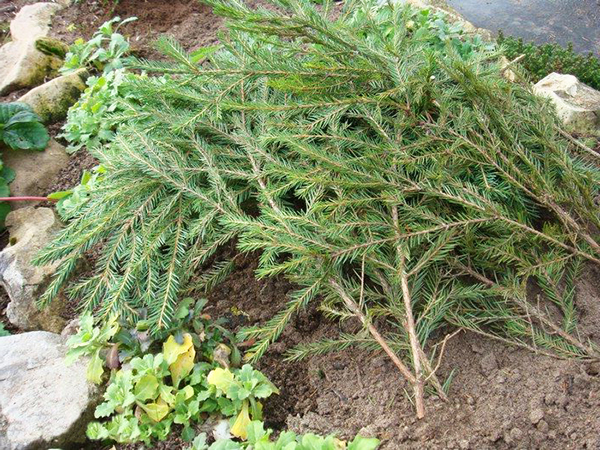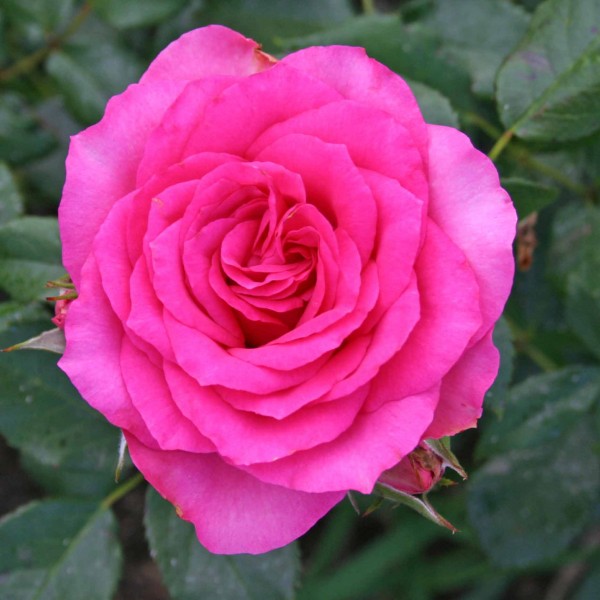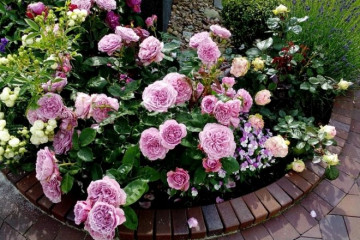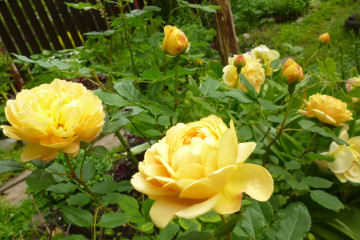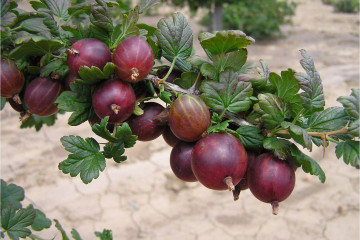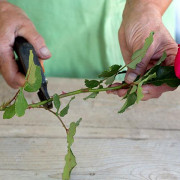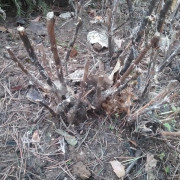Rose Maritim - characteristics and features
Content:
The rose is loved for the beauty of the bush itself, the beauty of flowering and, of course, for its unique sweet and delicate aroma. Previously, residents of central Russia could only envy people from the southern regions, but they themselves rarely dared to grow this beautiful flower on their site. But today, every 3 household plots boasts at least one rose bush.
Rose Maritim: characteristics of the variety
One of the most common and popular plants is the rose. As of mid-2019, there are more than 1000 varieties of this flower, and about 10,000 varieties. In addition, specialists do not stop, more than 35 new varieties of roses are patented annually. Plants are grafted with new qualities, new colors of petals.
Besides beauty, the rose has medicinal properties. Rose petals are also used in cosmetology and perfumery. In cooking, the rose also found its use: jams are made from it, petals are candied, used as an additive to tea or in the form of a seasoning.
Rose variety Maritim was bred by German breeders in 2007. And he has already received well-deserved recognition from European and Russian gardeners. It is a perennial plant belonging to the climbing rose family. An adult plant reaches a height of 3 meters.
Rose Maritim grows in height slowly, growing mainly on the sides. The shrub reaches 150 cm in width. The plant has strong and strong shoots, up to 1.5 cm in diameter. Bright green leaves typical of climbing roses.
The buds of this variety of roses deserve special attention. They are large, up to 15 cm in diameter, with a large number of petals. Initially, the buds bloom in the form of a ball, but in the process of flowering and opening, they become flat.
The inflorescence that has opened to the end does not expose the core. Rose Maritim is resistant to irritants in the form of a bright sun, so the color of the buds remains bright and saturated during the entire flowering period. During the season, the plant can bloom 2-3 times, with short resting phases, depending on the region in which it is planted.
Maritim rose: advantages and disadvantages
The pros and cons appear when a given variety is compared with other varieties of the same subspecies. Over the years of research and after analyzing the description and reviews of gardeners, this type of plant has the following advantages:
- resistance to low and high temperatures, as well as to drafts;
- large buds covering the entire plant;
- repeated flowering throughout the season;
- convenient bush shape for use in various design elements.
Due to its merits, rose Maritim takes pride of place in use for creating landscape design. The most popular place for planting it is considered to be fences, hedges or walls. The plant has a flexible and docile shape, which allows the rose to be used to create arches, tunnels, hedges and figures if desired.
Planting and growing a flower
Maritim rose is planted in the middle autumn: at the end of September, beginning of October. It is necessary to choose the planting time so that the plant can take root before the onset of cold weather.
Planting material is prepared in advance, basically it is a ready-made germinated seedling, with a well-developed root system and trunk. A seedling is purchased in nurseries or specialized stores, but in some cases it can be germinated on its own.
For this, experienced florists use:
- germination of seeds;
- cuttings;
- division of the bush.
Before planting, it is necessary to prepare the place where the shrub will grow. This rose variety is resistant to weather conditions, but you should not take unnecessary risks. The rose loves the sun and should be sheltered from drafts. However, shrubs need free access to fresh air. Fertile, loamy soil should be preferred.
Also, before planting, you need to prepare the planting material. To do this, the seedling is freed from packaging and placed in water for 24 hours. After that, you need to remove the weakened shoots, leaving no more than 5 pieces of the strongest. The shoots themselves also need to be shortened to 15 cm. The root system should be carefully examined and damaged roots, if any, should be carefully removed. After that, the seedling is placed in a water-manure mixture and kept in it for up to 5 hours.
At the same time, a hole is being prepared for planting. The diameter of the hole should be approximately 50 cm. A drain is placed at the bottom of the hole and the nutrient mixture is poured. After that, the seedling is installed in the prepared hole and covered with soil. The root collar should not sit deeper than 4 cm. After planting, the rose Maritim is watered with a water-manure solution and the stems are tied up.
Caring for a climbing rose Maritim
Rose is a moisture-loving plant, so it needs regular watering, especially in the first days after planting. The main requirements for irrigation water are that it must be settled, in no case cold. Water in the morning and evening to avoid sunburn on the plant.
In order for the plant to grow healthy and lush, the soil must not be allowed to dry out at the base of the bush. The rose needs constant access to oxygen to the roots. To do this, the shrub must be regularly loosened and monitored for weeds. As a rule, organic fertilizers are chosen for feeding. Ideal: fertilizer based on cow dung.
Pruning occurs as needed throughout the season. The shrub is cut either in order to give the plant the necessary, planned shape, or to maintain a healthy appearance in the plant. Remove weak, broken shoots, buds that have faded or failed to develop.
In order for the transplanted bush to give flowers better than before, it is necessary to follow the simple transplant rules.
Early spring or mid autumn is suitable for replanting. The rose must be prepared: old, weak and dry branches are cut off, the height of the shrub must not exceed 0.5 m. The roots must be dug out carefully, keeping an earthen lump. After digging up, the root system must be tied with a soft cloth or gauze.
In a new hole, you need to put top dressing and fertilizers, then install the tied plant. The winding can only be removed when the hole is half filled with soil. This will allow the roots to take on a new position gently and stress-free. Then the hole is completely filled up, while it is necessary to ensure that the rose bush is at the same level as in the previous planting site.
In order for the rose to winter safely, it must be prepared. The shrub is cleared of old shoots and buds; only 10-15 healthy shoots are left for wintering. The base of the bush is covered with peat and humus.Shoots are collected in one bunch and tied. If gaps have formed between the shoots, then it is necessary to shift the shrub with coniferous paws. Then the rose must be tied with heat-insulating material, for example, isolon or agrofibre.
Bloom
This variety, sometimes referred to as the Maritime rose, is a remontant type of modern climbing large-flowered rose. That is why the flowering of the rose Maritim continues from late May - early June to late September - early October. It all depends on what region of landing and what the weather is in the season. The flowers are painted in various shades of crimson red: from bright pink to faint lilac. Sometimes, in bloom, they look like Topala's rose.
The rose blooms, covering the entire shrub with buds, from top to bottom. After full flowering, the shrub is dormant for a short time. At this time, he is recruiting trace elements and nutrients necessary for flowering. The rest period depends on weather conditions and can last from 7 days to 6 weeks.
Caring for a plant during and after flowering is not much different from regular care. The only thing, by the end of flowering and during the dormant period, the Maritim rose needs additional feeding in the form of organic and mineral fertilizers.
If the shrub cannot pick up color for a long time or the buds that have set fall off without blooming, it is necessary to check the level of moisture and acidity of the soil. Excessive waterlogging can stop the flowering of the rose until the plant returns to normal. Soil acidity also affects color formation.
Flower propagation
You can prepare a Maritim rose for reproduction at any time of the year. However, in winter, it can only be propagated if it is kept indoors. You cannot disturb a rose hidden for the cold season.
Shrub propagates by cuttings. To do this, you need to take a shoot that has recently dropped all the buds. The shoot is cut off with a thin sharp knife, at an angle of 45 °. All cuts on future cuttings must be done while observing this angle.
The shoot is cut into cuttings, approximately 10-15 cm in length. In this case, it is important that at least 3 buds remain on the segment. Then, the prepared cuttings are placed in a container of water. The liquid should cover the twigs no more than half.
After the buds have blossomed, you need to wait until they reach 2-3 cm in height. After that, the processes are separated from the cutting with a sharp and thin blade, slightly obliquely, grabbing a little bark. Then they are again placed in a water-nutrient solution for several days. After about a week, the shoots can be transplanted into soil and continued to root at home. If rooting has gone well, then next season the planting material can be transplanted into open ground.
Diseases and pests
This rose variety is resistant to various pests and diseases that various garden plants are susceptible to. The only possible disease on the Maritim rose is powdery mildew. It appears from an excess of moisture. After the fungus is found, it is necessary to normalize the watering of the plant and treat the leaves of the bush with a solution of laundry soap.
A rose needs care, love and care. However, she is not as capricious as she would seem.This delicate and beautiful flower has powerful power. If you learn how to care for a rose, then it will fill many years of joy and beauty for gardeners, both amateurs and professionals.
